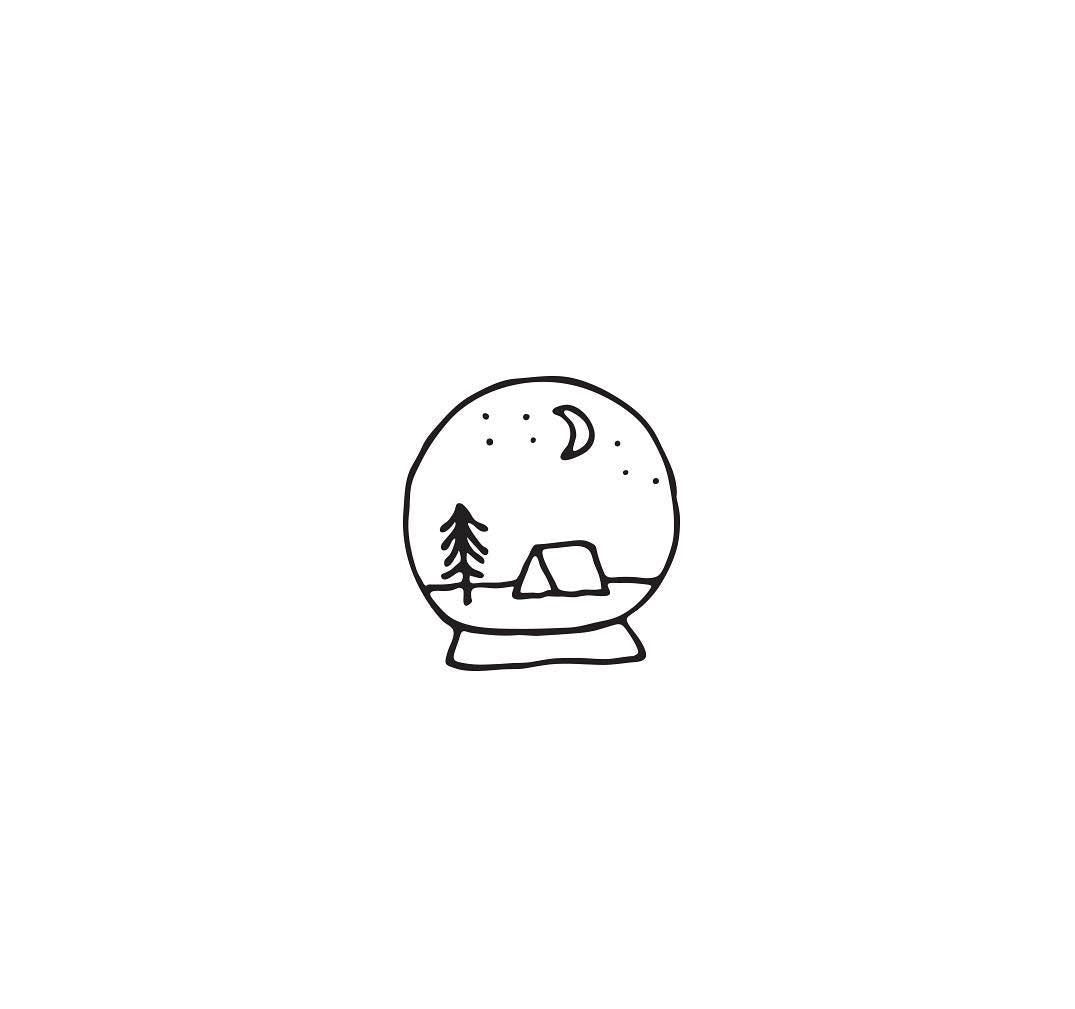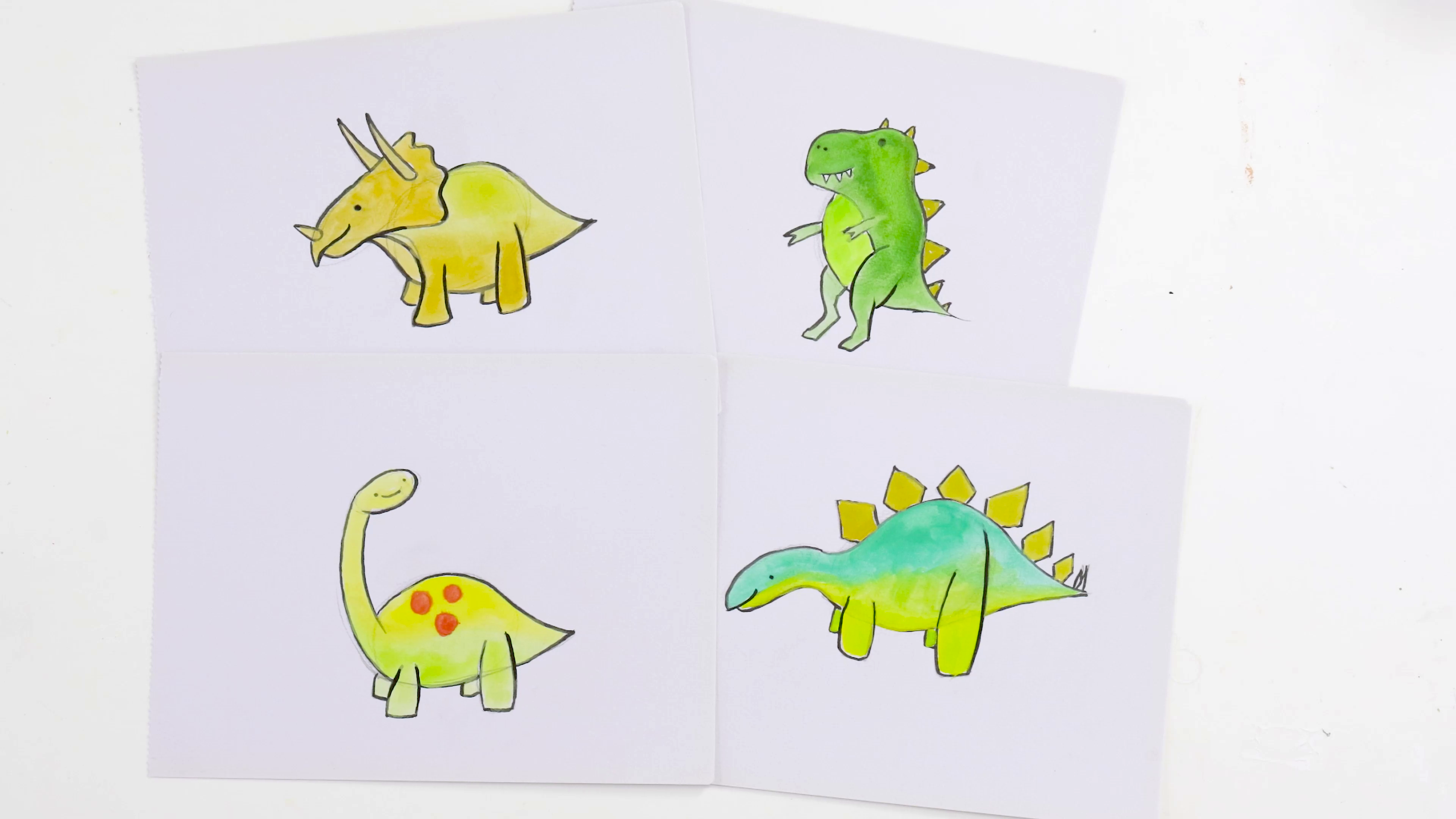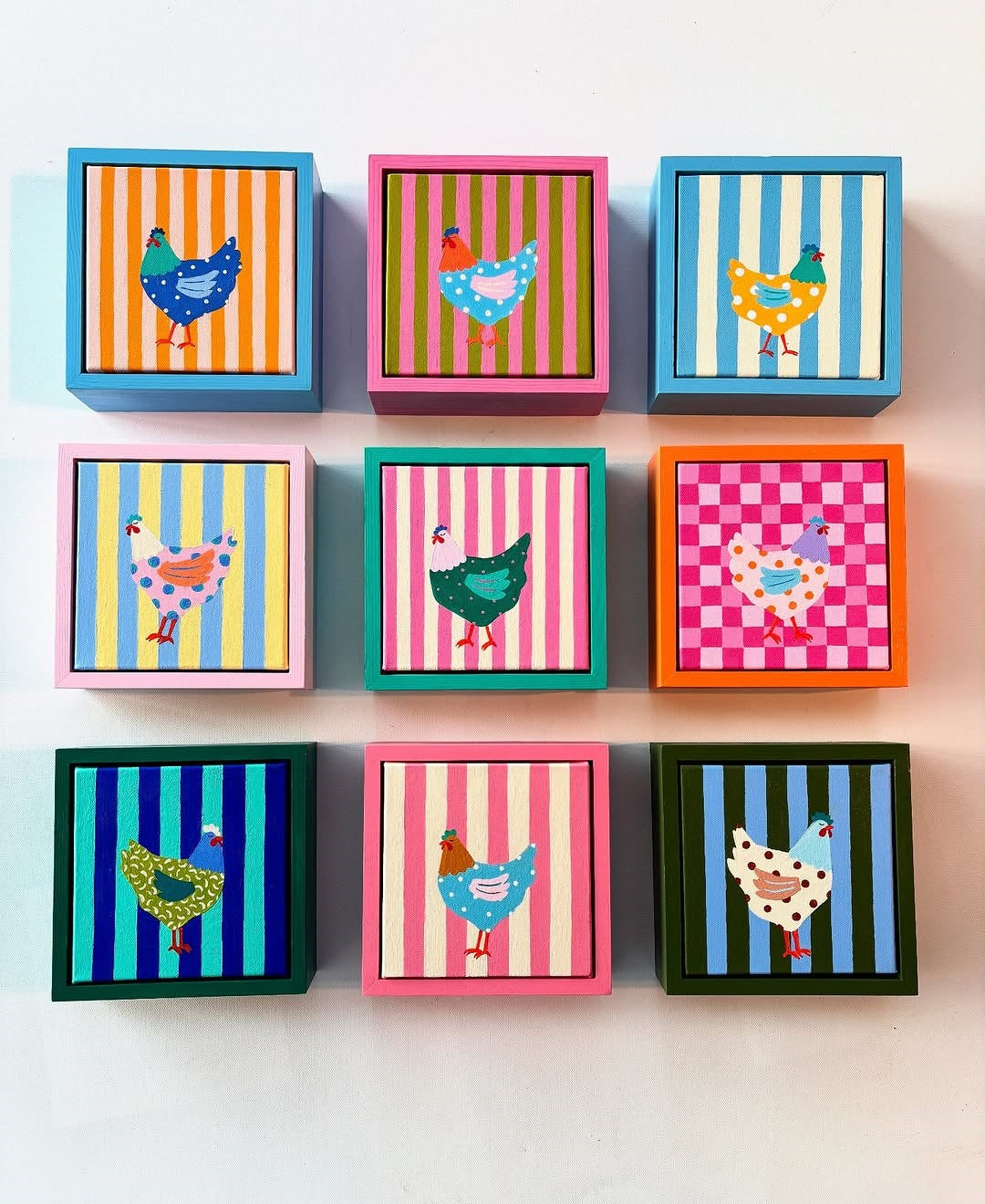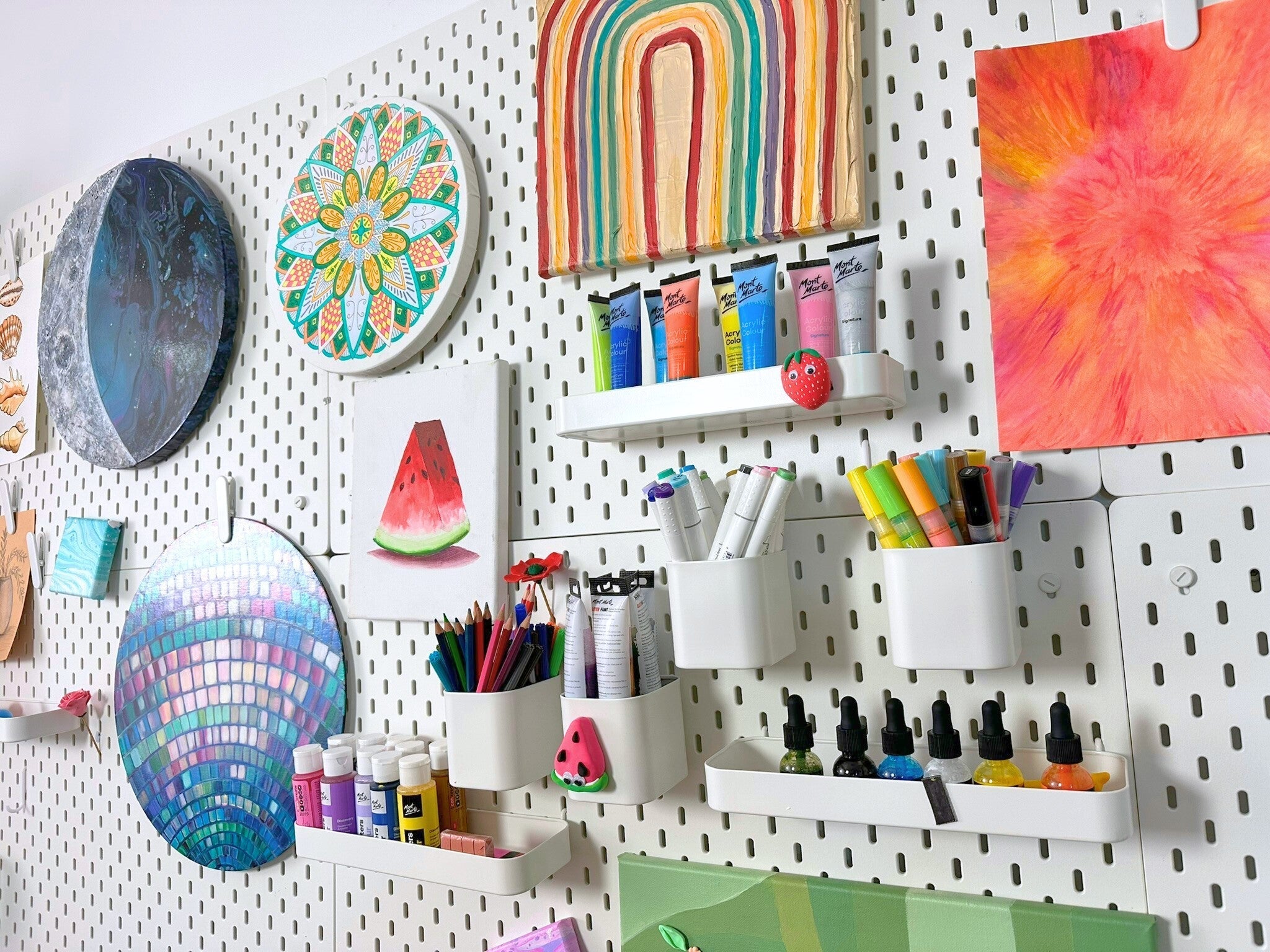Play up the look and feel of your artworks with these 20 texture techniques. From impasto to adding sand to acrylic paint for texture, we’ve found plenty of fun ways to add interest and dimension to your paintings.
How to create texture with oil paint
Grab the oil paints and follow along with these texture techniques.
1. Impasto with a brush
We all know that oil paints have a rich, buttery texture but did you know that you can increase the texture even more? Mixing impasto in with your oil paints and applying it with a brush directly onto the canvas, will not only help you use less paint, but it’ll also help create choppy brush strokes like Van Gough and the Impressionists used in their paintings.
Handy hint: If you’re mixing in impasto, try squeezing your oil paints onto thick cardboard then mix in the impasto to your oils. The cardboard will draw some of the oil from the paint and be easier to work with.
2. Using a palette knife
No brushes? Nothing to worry about, you can use a palette knife to apply your oil paints (either by blocking in or by using impasto and applying it directly with a palette knife too). Whether you use the palette knife to add in shadows, broken or thicker lines or small touches of detail, it’s worth giving this texture technique a go next time you reach for the oil paints.
3. Dry mediums
Throwing sand, gravel, beads, or fabric onto an oil painting might sound crazy but hear us out. Dry mediums will stick to your paints and give your works more interest and texture. Try adding them to small areas, experiment and mix the dry mediums into the paint or add them directly onto a painting.
4. Dry brush
This technique relies on the texture of the canvas, so before starting, it’s best to reach for a heavy weave or a gessoed canvas before starting. To dry brush you’ll need to load a clean, dry, stiff brush with minimal oil paint, then apply the brush to the canvas. Dry brushing won’t be as heavily textured as impasto, but you’ll still see nice glistens of colour as the light hits the paint and shows off the canvas’ texture.
5. Sgraffito
By scratching away at the canvas, this will add texture because the layer underneath is exposed from the etching. It’s all about layers with this technique, so build up a layer by underpainting (you can find how to create this oil painting technique), then use a toothpick, or palette knife to scratch or etch in a pattern. This will reveal the underlayer and give a nice texture to your work.
Using mediums to build texture
Turn to mediums to dial up the dimension and interest in artworks.
6. Light moulding paste
If you’re feeling like your painting is looking a little flat, it might be best to turn to a light moulding paste. This medium is great for building peaks and creating body in your artworks. Using a taklon brush or a palette knife, apply this medium to the areas you’re wanting to add more life to, then paint over it with acrylic or oil paint once it’s dry.
7. 3D effect
You can add a 3D effect by building up peaks or embedding objects into your artworks to add even more texture and profile to your art. Grab a modelling paste and apply a thick layer of paste over your surface, then add your objects to the wet paste. Think sticks, rocks, buttons, or even small plastic items. Once it’s dry, you can paint over the white paste with acrylic or oil paints, and you’ll have a nice new texture.
8. Crackle effects
If you’re wanting to add some interest or looking to get an aged effect to your artworks, grab some crackle paste and give it a go. Apply a thin layer of crackle paste to your surface with a taklon brush and leave the paste to dry. Once it’s dry, the surface will have cracks and you can paint over the paste with acrylic or oil paints. (Looking to learn more? Check out our answers to 11 crackle paste questions.)
9. Mixing in impasto with acrylic
You can mix impasto directly with your acrylic paints to create a thick textured paint, which is super handy if you’re wanting to add texture or if you’re looking to mimic oil paint and keep strong brush strokes in your work. Because impasto is water-based it can’t be mixed with oils, but it can be mixed directly with your acrylic paints, and it won’t change the colour. Mix some impasto with acrylic paints onto your palette and then apply it with a brush or a palette knife.
How to build texture with acrylic paint
Is acrylic more your style? Try these acrylic texture techniques out.
10. Thick gradients of colour
You can mimic the look of thick bodied oil paints by using a dimension acrylic paint. Use a stiff paint brush and apply thick strokes of paint to your canvas then add a second colour. Blend the two colours together with short brush strokes to create a gradient of colour. Then you’ll have the look of oil paints, but without all the waiting.
11. Using a flat palette knife
You can create amazing textural works using acrylic paint and a palette knife. Instead of using a brush, use a flat palette knife to dip into your colour, then stamp the knife onto the palette. This will give you a nice stamping of colour that you can use to add texture to leaves or flowers in your acrylic art.
12. Adding sand to acrylic paint
Adding sand to acrylic paint for texture will help increase the interest, look and feel of your acrylic art. You can sprinkle the sand directly over your canvas or mix the dry material in with your paints. Or go the extra mile and pick up a palette knife to swirl or dip the paint around. Not sure where to start? Check out this handy how-to video that’ll show you how to add texture to your painting using household items.
13. Textured dots
Whether you use this in your pointillism, dot art, or you’re just looking for something fun to try, give this textured dot technique a go. Grab the end of a paint brush and dip it into a good amount of acrylic paint, then stamp the tool onto the canvas. Lift the tool up vertically and you should have a dot of colour with a small spot of leftover paint in the middle of the dot for texture.
14. Textured lines
If you’re looking to add stripes of colour or thick coloured lines to your acrylics, this one’s for you. Mix a gel medium or impasto into your acrylic paint to build up the texture first, then press on the layer of paint with a long, thin palette knife. You can add more lines by pressing the knife onto the paint and experiment with lines closer together or further apart.
15. Masking tape
This texture technique is great for mixed media works where layers are being created and built up over one another. Add strips of masking tape to your canvas, don’t worry if there are air bubbles in the tape (this will look better), don’t be afraid to get messy in your application. Then paint over the tape with acrylic paint. Add some modelling paste or layers of impasto on top, then paint again and you’ll have an interesting, textured piece.
16. Cling film
You don’t need a lot to create interesting textures. Add a layer of paint to your canvas, then add a second layer of a contrasting colour on top (think blue and red, yellow and blue or yellow and red) then lay a sheet of cling film on top of the canvas. The trick for this, is to have cling film that’s got a few wrinkles and warps to it. Then once the second layer is dry, remove the cling film and you’ll have an interesting, texted effect. You can also try this with crumpled newspaper or aluminium foil.
17. Egg shells and PVA
If you’re looking to create a crackled texture for scales or a weathered effect and don’t have crackle paste on hand, we have a handy technique to help. Using PVA glue, apply a thin layer to a surface using a taklon brush. While the glue is still wet, sprinkle crushed eggshells on top, once the glue has dried with the eggshells in it, you can paint over the textured surface with acrylic colour.
18. Adding textiles
Fabrics like hessian, gauze, rope and even feathers can create interesting texture in your acrylic artworks. Lay a layer of colour onto your canvas, then apply a layer of PVA glue on top. Add your textiles to the wet glue then wait for the glue to dry. Once dry, paint over the textile with acrylic. If you’re using gauze or hessian, you can crumple, rip and layer it up to create a high profile and increase the texture.
19. Sgraffito
Like oil paint, sgraffito can be used with acrylic paints too. Build up each layer of paint to your surface, leaving enough time for each layer to dry. After this has dried, you can scratch the surface back to show the underpainting. This can also be done using oil pastels on thick paper or by using a nail or toothpick to remove the layer on a canvas. Just be careful not to etch too hard or you can accidentally rip the canvas underneath.
20. Expressive brush strokes
If you’re wanting to build up small areas of texture in your art, you might want to try using expressive brush strokes. This technique allows you to control where the texture is applied so if you’re wanting to use texture to create shadow or light, try this. Using a heavy bodied dimension acrylic and a short filbert brush, lightly apply the colour to the areas you’re wanting to build texture in. Dabbing the brush quickly will create these effects, just resist the urge to smooth out any lines. Once dry, the dimension will hold its shape and you’ll have expressive strokes.
Looking for more? Learn how to add texture to your paintings using household items in this handy how-to video. Or browse our heavy bodied texture acrylics from our dimension acrylic range.
We hope that you feel inspired to try these texture techniques for yourself. #montmarteart or tag us @montmarteart on Instagram or Facebook, we’d love to see what you create.

































